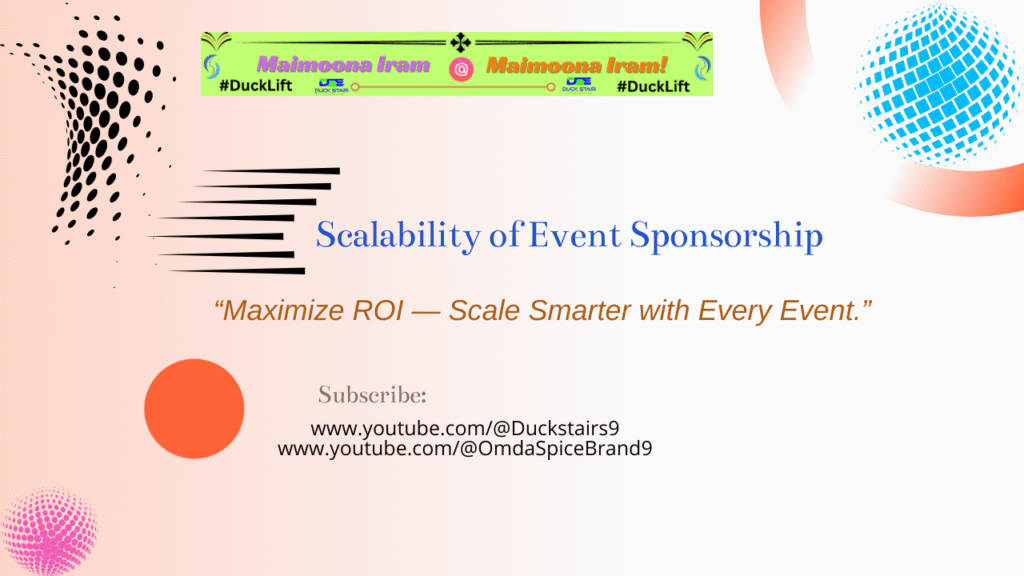
Scalability of Event Sponsorship
The Scalability of Event Sponsorship: From Local Impact to Global Influence
In today’s hyper-connected and brand-conscious world, event sponsorship is no longer just a static line item in a marketing budget — it’s a dynamic, scalable growth strategy. Whether you’re a startup sponsoring a local fair or a global brand backing international conferences, the power of sponsorship lies in its ability to scale — in audience, reach, and return on investment.
What Does Scalability Mean in Event Sponsorship?
Scalability refers to how easily a sponsorship strategy can grow in scope without losing effectiveness. A scalable sponsorship approach allows brands to start small, test impact, and expand confidently across multiple events, regions, or digital platforms. This makes sponsorship not just a cost, but a scalable asset in brand building.
Why Scalability Matters
- Broader Reach Without Rebuilding Strategy
Once a sponsorship framework is developed — including branding, audience engagement tactics, and measurement tools — it can be reused and adapted for bigger or more diverse events. - Cross-Platform Leverage
With hybrid and virtual events becoming standard, sponsorship visibility can extend across physical venues, livestreams, social media, mobile apps, and post-event content — all at scale. - Audience Data & Personalization
Modern sponsorships are data-driven. Scalable strategies integrate tools to track engagement, allowing brands to adjust messaging for different audiences across different events. - Cost-Effective Brand Amplification
As events grow, unit costs per impression decrease, increasing ROI. A scalable model spreads the brand across multiple events and touchpoints with only marginal increases in cost.
How to Make Event Sponsorship Scalable
1. Develop a Sponsorship Playbook
Create reusable assets — branded booths, digital content, giveaways, and messaging templates — that can easily be adapted to different event formats and sizes.
2. Use Technology to Your Advantage
Platforms like event management software, CRM tools, and sponsorship ROI trackers allow brands to automate, replicate, and scale their participation across events.
3. Start with Tiered Packages
Begin with small sponsorship packages, and scale up based on performance. This allows for a low-risk entry point and provides flexibility to expand involvement as returns grow.
4. Leverage Strategic Partnerships
Collaborate with event organizers, agencies, or co-sponsors to scale visibility without proportionally increasing spend. Shared platforms reduce costs and increase brand synergy.
Real-World Examples of Scalable Sponsorship
- Tech Brands at Global Conferences: Companies like Google and Microsoft scale their presence from workshops at local developer meetups to global stages at events like Web Summit or CES.
- Coca-Cola at Sports Events: Starting from local team sponsorships to FIFA World Cup-level engagement, Coca-Cola shows how consistent branding and scalable activation can build global brand equity.
The Future of Scalable Sponsorship
With AI-powered event planning, immersive digital experiences, and better analytics, brands are poised to scale faster and more intelligently than ever. The future of sponsorship is not about how big you start — but how smartly you grow.
Conclusion
Scalability in event sponsorship is the key to sustainable and strategic brand growth. It transforms sponsorship from a one-off marketing effort into a repeatable, expandable system for visibility, engagement, and influence. Whether you’re targeting a local community or a global audience, scalable sponsorship ensures your brand grows where it matters most.
